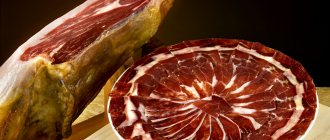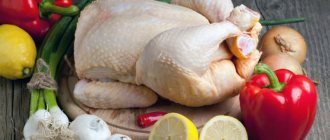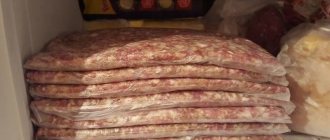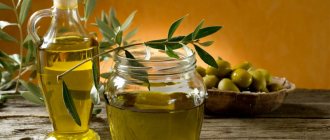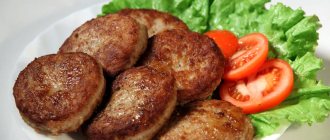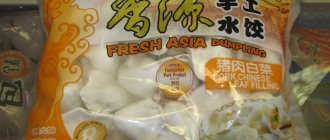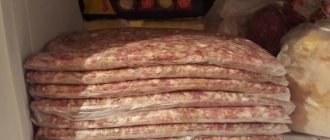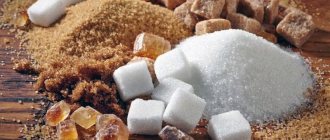Hello everyone, Olga is with you as always, perhaps you will need information on storing food and various things and I will tell you about Vacuum food storage: what is it and what is it for? Video and Photo. Maybe some details may differ, as was the case with you. Attention, always read the instructions of the things you buy for cleaning the house or the chemicals that help to store them. I answer the simplest questions. Write your questions/wishes and secrets in the comments, and together we will improve and supplement the quality of the material provided.
Every housewife thinks about how to preserve food for as long as possible without spoiling or losing its beneficial properties. Vacuum food storage comes to the rescue.
The word “vacuum” itself is translated from Latin as “emptiness”. In other words, vacuuming creates a space in which there is no air. When it comes to food, oxygen is removed from special bags or containers. The absence of oxygen prevents the process of harmful oxidation reactions and the formation of bacteria and fungi.
That is, the absence of air leads to the absence of factors that affect and spoil products. Thus, pumping out air from the place where food is stored helps prevent spoilage and keep it fresh and healthy for as long as possible.
Types of packaging
Due to the fact that more and more housewives are beginning to store food in this way at home, manufacturers offer a large selection of special vacuum packaging: containers and bags of various shapes, sizes and even colors. All of them are sold complete with a pump, which is necessary to remove all the air from the package. On some models, the pump may be built into the lid.
- Vacuum storage containers are the most popular . They are made of plastic or heat-resistant glass, which allows them to be used in the microwave, for example, when defrosting stored meat. Additionally, some models are equipped with a built-in calendar that allows you to set the storage start date. You can buy such containers at most supermarkets or specialty kitchenware stores. They are not cheap, especially those made from high-quality materials, but their price is fully compensated by the advantages.
- You can also quite often find vacuum bags for storing food . They can be either disposable, requiring the use of a vacuum sealer, or reusable with a special valve to remove air.
Cooking meat and poultry at low temperatures on the stove
For simmering on the stove, you can use the toughest and densest pieces of meat, that is, the working muscles of the animal. The best cuts of beef to simmer on the stove are: front and back shanks, brisket ribs, and outer rear cuts. Pork: knuckle, ham, legs, boneless brisket. Chicken: breast, thighs, whole bird, cut into portions. In order for the toughest pieces to soften and the collagen to turn into gelatin, long-term temperature maintenance
60-80 °C. How to achieve temperature accuracy? The easiest way is in a slow cooker (1) - this is described in detail in the chapter “How to cook sous vide meat without a sous vide machine.” The second simple option is on an induction hob (2): with the minimum thermostat settings, exactly this temperature is achieved, although it is better to check with a thermometer. And finally, on other stoves (conventional electric, glass-ceramic or gas). Here you need a thermometer (3), which you will have to dip into the sauce from time to time to see if the temperature has risen too high. To reduce the heating level, use a divider (4) for a gas stove. And on an electric burner you can put a ring (5) folded from tightly twisted foil - and place the dishes with meat on it. The simmering vessel itself must be spacious enough and have a thick bottom (made of several layers of metal, double or triple) and preferably thick walls. This can be stainless steel (6) or coated cast iron (7). Cast iron (duckling and goose pans) is an ideal cookware for simmering both on the stove and in the oven: it distributes heat as evenly as possible. If you don’t have the opportunity to wait for hours for your dish to be prepared, you can always replace this labor-intensive process with tender and soft ready-stewed meat from Miratorg - it simmered in natural marinades and sauces directly in the package at 95 ° C for more than two hours.
Processing and slicing
Most often, meat and poultry for simmering on the stove are cut into portions or very small pieces. You can simmer the whole thing, but the product must be completely covered with liquid (1) or the pan must have a lid that fits without gaps - so that the resulting steam remains inside and does not allow the protruding piece of meat to become dry. Otherwise, the processing of meat for simmering is the same as for baking (2). If there is a layer of fat on the meat, when simmering, place the piece with the fat side up so that it gradually melts and enriches the meat with its taste (3). The processed meat can be immediately fried until golden brown and then immersed in liquid, or vice versa - simmer first and fry, removing the sauce when it is completely cooked. Both options have a right to exist, but the taste is different - try it and decide which one you like. Sauces for simmering
In order for the meat to be better saturated with flavors during simmering, ingredients with the appropriate qualities must be added to the cooking liquid. The most versatile base for sauce is broth. Moreover, it is not necessary to use chicken for chicken, and beef for meat. Using a “different” broth enriches the taste of stewed meat. Instead of salt, you can add salt to the broth, but its substitutes - soy or Asian fish sauce. An excellent element of simmering sauce is chopped tomatoes, fresh or canned in their own juice. You can also use ready-made tomato sauce with a minimal addition of vinegar or a small amount of tomato paste. In the same small quantities you can add dry wine, lemon juice or other sour fruits. Unlike frying over high heat, you can use unrefined oils when simmering. Since the temperature in the pan is low, you can choose any oil you like - even sunflower or sesame, which burn over medium heat. Olive, mustard, nut and flaxseed oils are also suitable. Fresh herbs can be added either halfway through cooking or at the very end, while dried herbs can be added only at the beginning. Spices for long-term simmering are more suitable whole, unground: coriander, cinnamon, cumin, star anise, barberry, peppercorns, cardamom, mustard seeds... Spices can be placed in a fabric bag so that later you do not need to strain the sauce. It is better not to keep the bay leaf in the sauce for longer than 15 minutes - it begins to smell unpleasant and taste bitter. Try not to combine rosemary with bay leaf and/or juniper - you will not feel the taste of meat behind them. If the vegetables in the sauce are boiled, beat the sauce with a blender - this will make the dish look much more attractive
General information
To vacuum food at home, you can use a vacuum container or a special device - a household vacuum sealer. What are the advantages of vacuum food storage?
The main ones include:
- Keeping food fresh for a long time, in some cases, even without storing it in the refrigerator;
- Isolation from foreign odors present in storage areas;
- Preservation of beneficial properties;
- Save space in the refrigerator and freezer.
In addition to the obvious advantages, this process allows you to significantly save money. Since it is possible to preserve vegetables and fruits purchased in the summer in this way and use them in food during the cold season, their price in stores and markets is much higher.
The downside of packing meat in a gas environment with a high oxygen content
It is a known fact that oxygen in large quantities promotes the oxidation of fat in the structure of meat. Accordingly, the product gets a rancid taste, which repels buyers. The problem is the excessive formation of cholesterol oxidation products, which negatively affects the health of consumers. Through laboratory studies, it was found that with an oxygen content of 70%, the composition of cholesterol oxides increases to 86.4%. Oxygen also promotes the activation of protein oxidation. This effect leads to a decrease in meat tenderness and loss of juice.
That is why it is extremely important to correctly select the gas composition of packaging mixtures, since the main task is to select favorable and safe conditions for storing fresh meat. The development of special packaging is aimed at increasing the convenience, quality and speed of product sales. In this case, all environmental aspects, requirements for protection against counterfeiting and weight reduction are taken into account.
Specialists in food mixtures https://idealgaz.ru/foodmix/ will be happy to advise you on all your questions and help with the selection of mixtures of the correct concentration to preserve the presentation and taste of the products.
What foods can be stored in a vacuum?
The list of such products is quite large. You can store meat, vegetables, cheeses, ready-made meals and then liquids in them.
It is worth considering the storage features of each of them:
- Raw meat and fish . It is advisable to pre-cool or freeze them for a few hours before packing them. This will help in retaining juice and shape. The shelf life of raw fish can thus increase from 3 to 9-10 days. If meat or fish is stored in a vacuum bag in the freezer, it can remain fresh for months or even a year.
ATTENTION! When placed in a vacuum, beef may brown due to lack of oxygen. But this does not mean that the meat has spoiled.
- Vegetables. Before putting them in a vacuum bag or container, preliminary short-term treatment with boiling water is required. This procedure is called blanching and allows you to preserve the smell, color and taste of products. Leafy vegetables and legumes require processing for 1-2 minutes, carrots - 5 minutes in boiling water, cereal plants - 10 minutes. After this, the vegetables must be cooled and dried, only then placed in a bag or container. The shelf life of vegetables in this form increases from 4-5 days to 3 weeks.
Besides the obvious solids, liquids can also be stored using special vacuum lids. In this way, you can extend the life of juices, compotes or vinegar.
- You can also store cooked foods , such as soups, cereals or casseroles. Their shelf life in a vacuum container increases significantly compared to conventional storage and reaches up to 2 weeks.
Weight control
Meat is a moisture-saturated product; moisture and ichor located in the fibers under vacuum begin to be pulled out of the piece and evaporate. Machines with simple control panels that adjust the vacuum depth over time do not allow you to control the process of moisture evaporation, which leads to weight losses of the product. So, with retail packaging of 1 kg, the weight loss from each package can reach 3-5 grams. With a production volume of 1 ton/day, daily weight losses can be 3-5 kg, or up to 100 kg/month. BOSS vacuum packaging machines can be equipped with high-tech Z3000 control panels, with an electronic vacuum sensor, which allow you to control the process of moisture vapor during packaging, which will allow the manufacturer to avoid weight losses and related losses.
Another method of packaging meat products is packaging in a gas environment. Often such packaging is used for red meat, which contains the protein myoglobin. Under vacuum, in the absence of oxygen, this protein stops working, and the meat loses its bright red color, acquiring greyish-brown shades, which can confuse the uninformed consumer. The gas environment supplied for red meat contains a large amount of oxygen, up to 70-80%, due to which the bright, rich color of the fresh product is preserved. Packaging with the supply of a gaseous environment is carried out on special machines - tray sealers. The meat is placed in a special barrier tray, vacuumed, then a gaseous environment is supplied and the tray is sealed.
Another packaging option produced on tray sealers is skin packaging. This is the most expensive type of packaging, which is used for the premium segment of products. In this case, the product is also packaged in a tray and vacuumed, but the tray is sealed not along the top side, but on top of the product and the entire inner surface of the tray. Such packaging creates a 3D effect of product perception, which makes the product stand out on the store counter.

